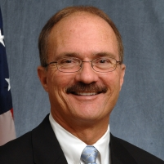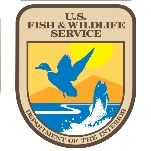At the Forefront of Conservation: A Collection of FWS History
works multilaterally with many partners and nations in the implementation of international treaties, conventions and on-the-ground projects for conservation of species and the habitats on which they depend. This section of FWS operates three subdivisions:
;
; and
.
|
Chugach Alaska Corp.
|
$64,848,201
|
|
Peter Kiewit Sons', Inc.
|
$61,828,818
|
|
Bluescope Steel Ltd.
|
$34,174,243
|
|
Industrial Economics Inc.
|
$23,036,000
|
|
U.S. Government
|
$19,522,678
|
|
Domus Holdings Corp.
|
$19,464,912
|
|
Caterpillar Inc.
|
$19,464,891
|
|
Prudential Financial, Inc.
|
$18,851,003
|
|
Paxton Van Lines Inc.
|
$18,112,246
|
|
Dell Inc.
|
$16,796,832
|
Fish & Wildlife is sued to gain jaguar protection: S. Ariz., N.M. called crucial habitat areas (by Josh Brodesky, Arizona Daily Star)
- Table of Contents
- Overview
- History
- What it Does
- Where Does the Money Go
- Controversies
- Suggested Reforms
- Comments
- Leave a comment

Daniel M. Ashe was nominated as the Director of the U.S. Fish and Wildlife Service on Dec. 3, 2010. However, Louisiana’s two senators, Republican David Vitter and Democrat Mary Landrieu, have placed a hold on his confirmation to try to force the Department of the Interior to issue deepwater drilling permits in the Gulf of Mexico.

A biologist and career employee of the U.S. Fish and Wildlife Service (FWS), Samuel D. Hamilton was confirmed by the Senate as director of the agency on July 31, 2009, and served until his death at age 54 from a heart attack while skiing in Colorado February 20, 2010.
- Latest News
- D.C. Public Schools will Teach all Second-Graders to Ride a Bike
- New Rule in Germany Limits Sales of Sex-Themed E-Books to 10pm to 6am
- What Happened to the 6-Year-Old Tibetan Boy the Chinese Government Kidnapped 20 Years Ago?
- U.S. Ambassador to Turkey Photoshops his Hair Color to Mock Turkish Mayor
- Mystery Artist Calls Attention to Unfixed Potholes by Drawing Penises around Them
At the Forefront of Conservation: A Collection of FWS History
works multilaterally with many partners and nations in the implementation of international treaties, conventions and on-the-ground projects for conservation of species and the habitats on which they depend. This section of FWS operates three subdivisions:
;
; and
.
|
Chugach Alaska Corp.
|
$64,848,201
|
|
Peter Kiewit Sons', Inc.
|
$61,828,818
|
|
Bluescope Steel Ltd.
|
$34,174,243
|
|
Industrial Economics Inc.
|
$23,036,000
|
|
U.S. Government
|
$19,522,678
|
|
Domus Holdings Corp.
|
$19,464,912
|
|
Caterpillar Inc.
|
$19,464,891
|
|
Prudential Financial, Inc.
|
$18,851,003
|
|
Paxton Van Lines Inc.
|
$18,112,246
|
|
Dell Inc.
|
$16,796,832
|
Fish & Wildlife is sued to gain jaguar protection: S. Ariz., N.M. called crucial habitat areas (by Josh Brodesky, Arizona Daily Star)
Comments

Daniel M. Ashe was nominated as the Director of the U.S. Fish and Wildlife Service on Dec. 3, 2010. However, Louisiana’s two senators, Republican David Vitter and Democrat Mary Landrieu, have placed a hold on his confirmation to try to force the Department of the Interior to issue deepwater drilling permits in the Gulf of Mexico.

A biologist and career employee of the U.S. Fish and Wildlife Service (FWS), Samuel D. Hamilton was confirmed by the Senate as director of the agency on July 31, 2009, and served until his death at age 54 from a heart attack while skiing in Colorado February 20, 2010.
- Latest News
- D.C. Public Schools will Teach all Second-Graders to Ride a Bike
- New Rule in Germany Limits Sales of Sex-Themed E-Books to 10pm to 6am
- What Happened to the 6-Year-Old Tibetan Boy the Chinese Government Kidnapped 20 Years Ago?
- U.S. Ambassador to Turkey Photoshops his Hair Color to Mock Turkish Mayor
- Mystery Artist Calls Attention to Unfixed Potholes by Drawing Penises around Them






Comments